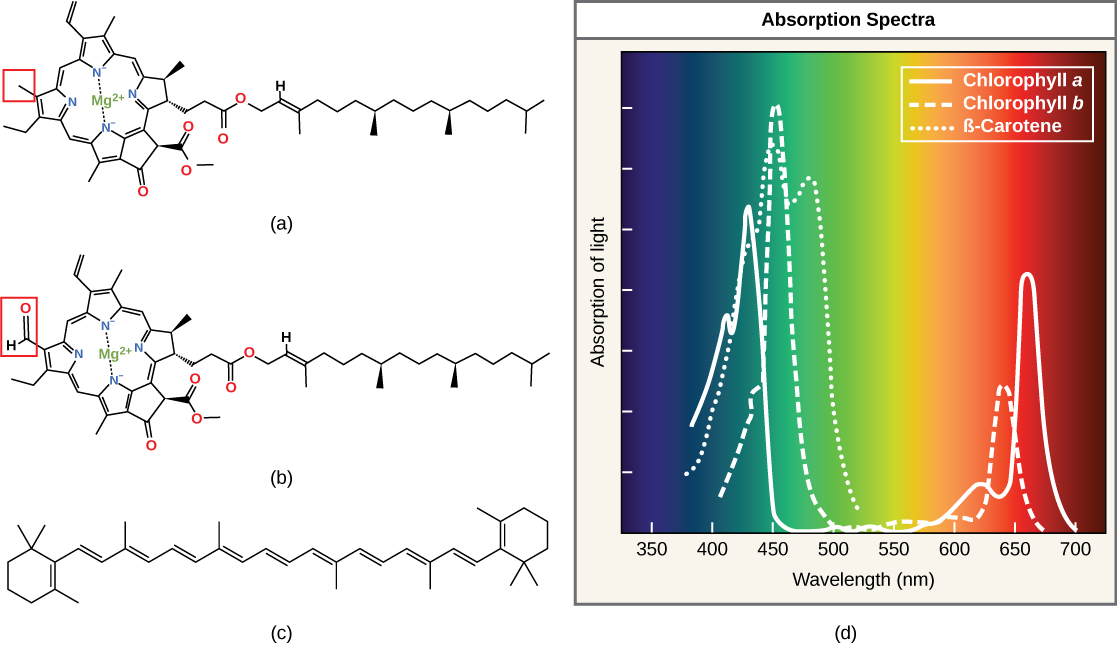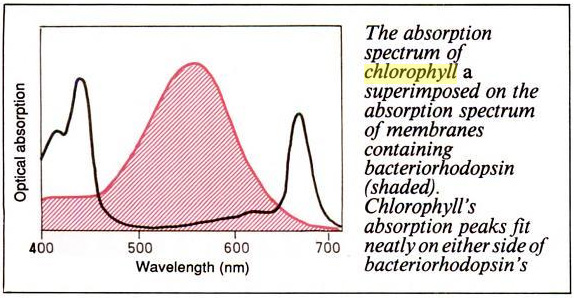We’re not light scientists at Growers Network, but we do know how to do research. Do plants use green light? What is the literature saying?

The following is an article produced by a contributing author. Growers Network does not endorse nor evaluate the claims of our contributors, nor do they influence our editorial process. We thank our contributors for their time and effort so we can continue our exclusive Growers Spotlight service.
One common debate we see on the Growers Network community is the role that green light plays in the growth of plants. You’ll see arguments from either side -- one arguing that green light may play a role in growth, but not photosynthesis, and another side arguing that green light does play a role in photosynthesis. So what does the research say?
Biomechanics of Photosynthesis
The first places we can go to determine the utility of green light in photosynthesis is biomechanics and biochemistry. In this case, we’re specifically talking about the light-dependent reactions that occur within the chloroplasts of plants cells. The molecules responsible for absorbing photons of light in the light-dependent reactions are most commonly chlorophyll a through d (Source), but there’s also the carotenoids that can play a supplemental role as "accessory pigments".
Each pigment has its own unique absorption spectra, or wavelengths of light that they are best at absorbing. Conveniently, most absorption spectra for these pigments are in the visible light spectrum, so we can describe certain colors as shorthand for different wavelengths of light. The three most common pigments associated with photosynthesis are chlorophyll a, chlorophyll b, and Beta-Carotene. Below I will show the absorption spectra for these pigments.

And hey, would you look at that! Chlorophyll B and Beta-Carotene do show some absorption in the green part of the spectrum. It’s not peak efficiency, but it’s there. So case closed, right?
Wellllll, these absorption spectra don’t take into account the relative proportions that these pigments are found in chloroplasts. Depending on the plant species and environmental factors, chlorophyll a can be two to five times more abundant in chloroplasts than chlorophyll b (Source). Additionally, carotenoid content can vary heavily depending on the species.
One other factor to consider is that some carotenoids may also serve a different purpose besides photosynthesis -- photoprotection. One particular subgroup of carotenoids, known as Xanthophyll, almost exclusively serve the role of photoprotectants. Carotenes, the other subgroup of carotenoids, do transmit light energy to chlorophyll (Source), but xanthophyll do not (Source).
So chlorophyll b and the carotenoids can absorb green light -- but not as efficiently as other wavelengths, but the argument doesn’t stop there! No sir/mam, we’re just getting started!
Shade Avoidance Syndrome
When I mentioned the relative proportion of chlorophyll a and b, there’s one thing I left out. The proportion of the two chlorophyll pigments to each other can change depending on the environment the plant finds itself in. Chlorophyll b, specifically, can be more or less prevalent in plant chloroplasts depending on whether the plant is in the shade or in open sunlight. If the plant is in shade, the amount of chlorophyll b relative to chlorophyll a increases. Conversely, when in open sun, the amount of chlorophyll a relative to chlorophyll b increases.
A few different proteins are responsible for the detection of light in plants (that aren't pigments), and these proteins help the plant determine the best course of growth. These proteins include phytochromes, cryptochromes, and phototropins. These particular proteins are responsible for responding to different light stimuli in the environment, and can sense when a plant is in shade based on the relative proportion of the different wavelengths of light.
When the plant senses that is in shade, its growth pattern changes. Arabidopsis thaliana, one of the most well-studied plants in history, has a well-documented shift in its pattern of growth when it detects that it is in the shade. The plant starts to “stretch.” Stems grow longer, petioles grow longer, leaves get smaller, axillary bud growth decreases, and more. Essentially the plant is stretching in the hopes that it will find more direct sunlight, and not waste resources on shaded growth.
So what does this have to do with green light? Well, green light is somewhat more abundant in shaded situations than other wavelengths, and red light is less abundant. As a result, the plant will increase its production of chlorophyll b, which is better suited to absorbing green light than chlorophyll a. But in open sunlight, the proportion of chlorophyll a will rise, which suggests that absorbing green light may be a suboptimal strategy for plant growth that the plant undertakes as a necessity.
Evolution
When I was an undergraduate studying Biology in college, one of my major focuses was on evolution. One question permeates all of evolutionary thinking, and that question is “Why?” So why would plants evolve to prefer red and blue portions of the spectrum? After all, when you look at the sun’s emission spectrum, the majority of visible light falls into the yellow and green portions of the spectrum. It would make the most sense to use some of the most abundant wavelengths of light as part of your energy strategy.
The reason for this is because evolution doesn’t necessarily care about what the most efficient strategy is -- it only cares about what works and what succeeds. And in the case of photosynthesis, plants are not the only photosynthetic organisms on Earth. Archaea and bacteria, large domains of single-celled organisms, used light energy to generate chemical energy long before plants arrived on the scene with their fancy version of photosynthesis.
In fact, many of these Archaea and Bacteria are purple and red in color -- a sign that they are absorbing green and yellow light directly. This is further reinforced by the presence of a protein pump known as bacteriorhodopsin in their cells, which primarily uses green and yellow light to generate chemical energy. Bacteriorhodopsin uses these wavelengths of light to create a proton gradient across their cellular membranes, and the proton gradient is then converted into chemical energy.
When you compare the absorption spectrum of chlorophyll a against bacteriorhodopsin’s absorption spectrum… a surprising image emerges.

This is almost like a smoking gun to an evolutionary biologist. No wonder chlorophyll prefers red and blue light -- chlorophyll had to compete with bacteriorhodopsin when plants were first evolving as green algae, and only a few parts of the spectrum were available to work with. Later, as plants began to dominate the photosynthesis scene and the Great Oxygenation Event occurred, plants (and by extension, evolution) simply continued to do what worked.
In fact, there’s evidence that plants are so efficient at gathering energy from the red and blue wavelengths of light, that when they absorb green and yellow light, they end up absorbing too much energy, risking cellular damage. The Xanthophylls, a group of pigments commonly described as purple and red, absorb light in the green and yellow portions of the spectrum. Instead of using this energy for photosynthesis, they dissipate it. Xanthophylls are found in greater abundance in plants that are colored purple or red -- plants such as red leaf lettuce or red cabbage.
So that’s it then? The story’s settled, green light is not optimal for plants, right?
Stop jumping the gun reader! We’re not done.
Leaf Penetration
As I mentioned previously in this article, the shaded light underneath plants often contains more green light. Why is that? Well, green light is able to penetrate through leaves, and isn’t just absorbed on the surface of the leaf like red and blue wavelengths are.
In fact, in plants with thicker leaves, the interior tissue of the leaves is better at absorbing green light than the exterior tissue. In one study, lettuce only absorbed green light with 50% efficiency, but evergreens, with their thicker leaves, absorbed green light at nearly 90% efficiency (Page 686 of the study). This definitely confirms that green light is absorbed by plants, and can be particularly helpful to plants with thicker leaves. Plants with thicker leaves tend to be closer to higher latitudes, where light is often dimmer, so more solar energy is beneficial.
Cannabis leaves are roughly as thick as construction paper when they're healthy, so they're not super thick, and probably won't see as significant a benefit from green light as thicker leaves might. But, there is some benefit to green light.
Conclusion
Well, you’ve stuck it out with me. What conclusion do we arrive at? Is green light useful for growing plants?
Yes, and no. Based on what we explored in previous sections, plants definitely can use green light to grow. There is no doubt about that in my mind. However, compared to the red and blue portions of the spectrum, green light's effects are somewhat less useful to the plant. Plants will attempt to stretch towards more blue-red intense portions of the spectrum where they can find more optimal growth.
If you want to include green light into your growing light spectrum, it probably won’t hurt the plant unless it’s an excessive amount of green light. However, evidence suggests that green light is suboptimal for growth when compared to red and blue light. So it’s up to you as a grower to determine how much you’re willing to pay for something that may or may not be useful.
10 Best Gift Ideas for Cannabis Connoisseurs and Growing Aficionados (2022)
December 7, 2022Developing and Optimizing a Cannabis Cultivation System
December 14, 2021Dealing with Insomnia: How Can CBD Help?
December 10, 2020Your Guide to Sleep and CBD
December 7, 2020
Do you want to receive the next Grower's Spotlight as soon as it's available? Sign up below!
Resources:
- Want to learn more about subjects similar to those touched upon in this article? Check out our articles on subjects such as:

Do you have any questions or comments?

About the Author
Hunter Wilson is a community builder with Growers Network. He graduated from the University of Arizona in 2011 with a Masters in Teaching and in 2007 with a Bachelors in Biology.